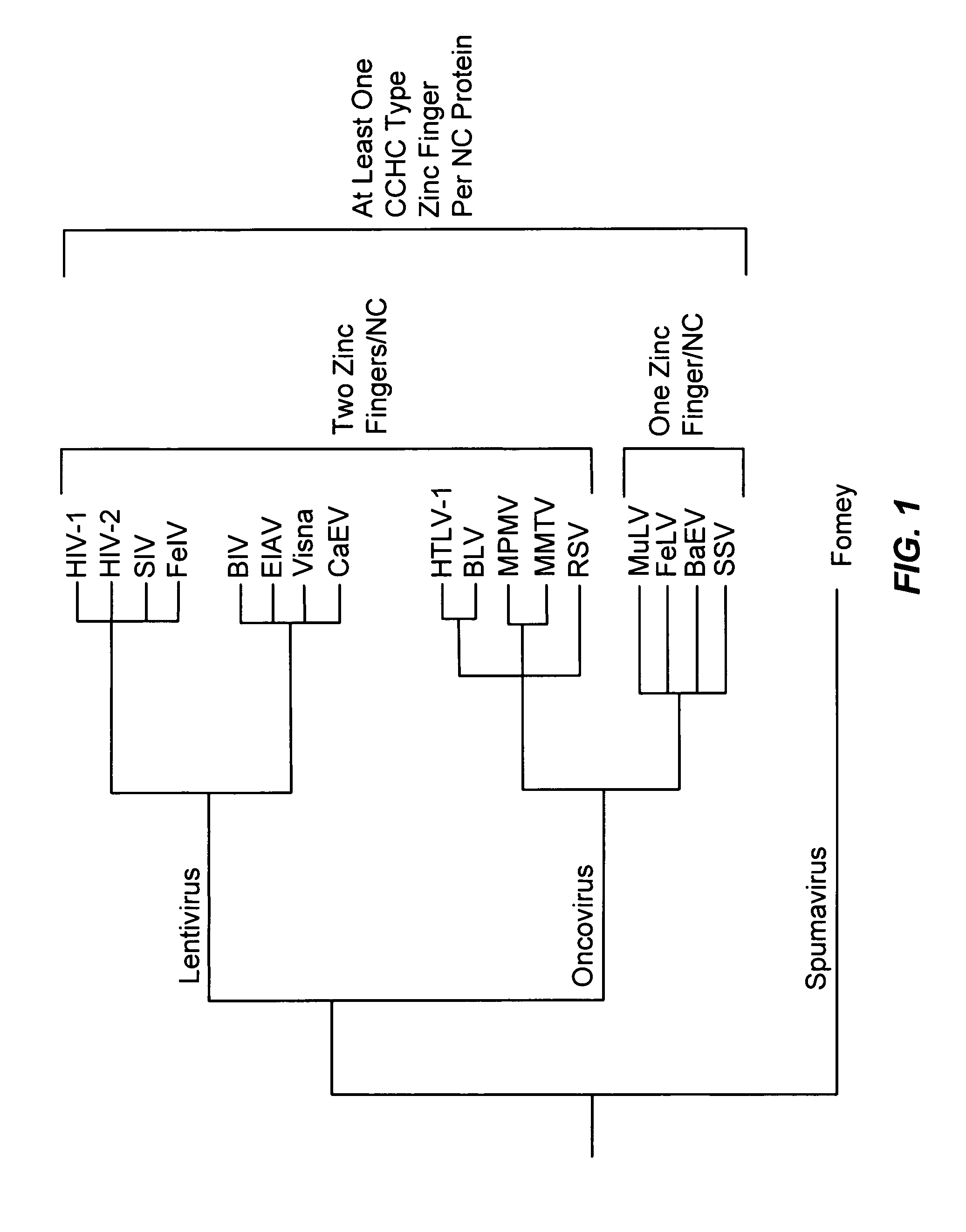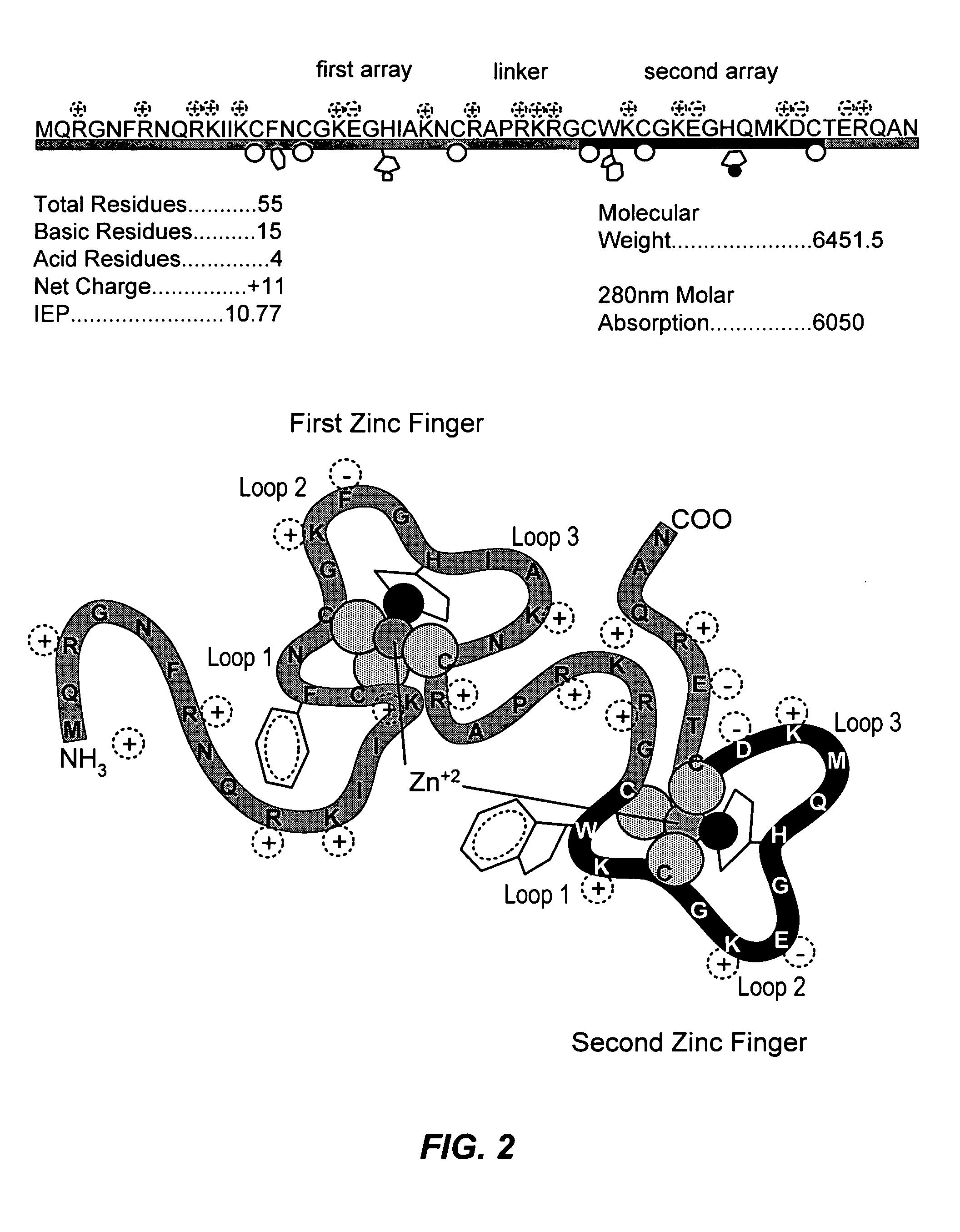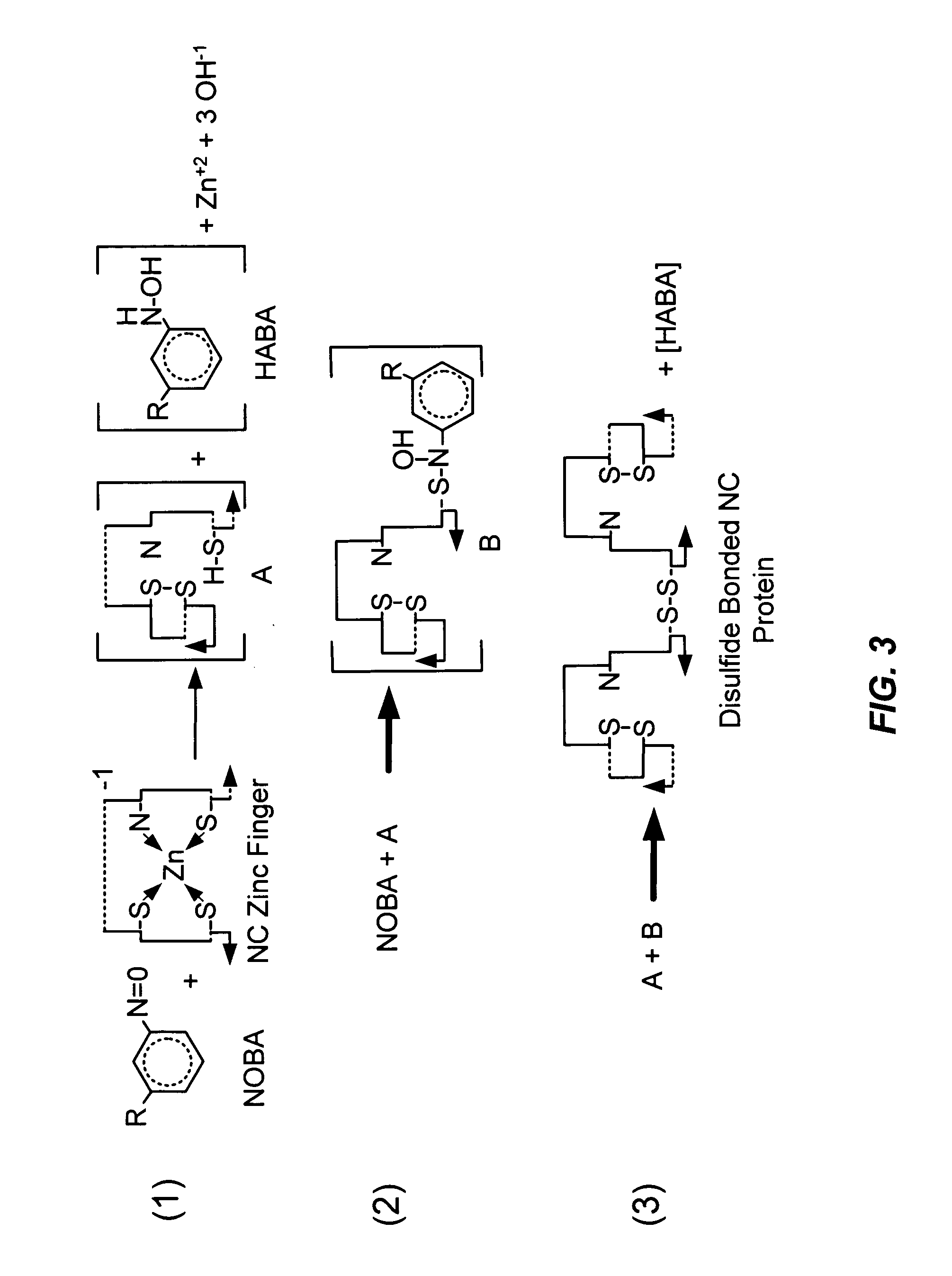Method for identifying and using compounds that inactivate HIV-1 and other retroviruses by attacking highly conserved zinc fingers in the viral nucleocapsid protein
a technology of zinc fingers and compounds, applied in the field of methods, can solve the problems of short-lived initial adducts (if formed)
- Summary
- Abstract
- Description
- Claims
- Application Information
AI Technical Summary
Benefits of technology
Problems solved by technology
Method used
Image
Examples
example 1
Reaction of Recombinant p7NC with Cupric Chloride
[0133]The NC protein of HIV-1 (MN) p7NC was expressed in E. coli. The coding sequence for HIV-1(MN) p7NC was cloned and expressed using an inducible E. coli promoter in the vector pMAL-c (New England Biolabs Inc., Beverly, Mass.). The protein was expressed as a maltose-binding fusion protein and released by proteolysis with Factor Xa. HIV-1(MN) p7NC was purified by HPLC and characterized, including complete amino acid sequence analysis. p7NC was purified by high-pressure liquid chromatography (HPLC) and reconstituted with two equivalents of zinc to generate native protein as described (M. F. Summers et al., Protein Sci. 1, 563 (1992)).
[0134]Coordination of Zn+2 enhances the intrinsic fluorescence of the single tryptophan (Trp-37) in the second zinc finger. Incubation of p7NC with cupric chloride, ferric acetate or the C-nitroso compound 3-nitrosobenzamide (NOBA) resulted in a rapid biphasic decrease in fluorescence, suggesting disrupt...
example 2
C-nitroso Redox Reactions with CCHC Zinc Fingers
[0141]C-nitroso compounds (R—C—N═O) are known to accept two electrons in redox reactions with thiols (R′—SH) to form disulfides (R′—S—S—R′) and hydroxylamines (R—C—NH—OH) via semimercaptal (SM) (R—C—(N—OH)—S—R′) intermediates (M. K. Ellis, et al., Chem. Biol. Interactions 82:151 (1992)). Similarly, 3-nitrosobenzamide (NOBA) reacts with 2-mercaptoethanol to generate the corresponding products; however, hydroxylaminobenzamide (HABA) is unstable and can form NOBA, aminobenzamide, and azoxybenzamide (AzoxyBA). HABA was identified by its characteristic reaction products. HABA (FIG. 9) was collected, incubated at 37° C. (30 minutes) and analyzed by HPLC, showing dismutation products NOBA and aminobenzamide as well as AzoxyBA.
[0142]A two-fold excess of NOBA was reacted with p7NC, and the products were separated by HPLC (FIG. 10) as described above for Cu+2 and p7NC. Elution positions for the reactants (NOBA and unreacted p7NC) and products, r...
example 3
Effect of NOBA on HIV-1MN
[0147]In order to determine whether HIV-1MN was inactivated by NOBA, the virus was incubated with varying concentrations of NOBA (3.0, 0.3, 0.03 and 0 mM) as in Table 1. The reaction products were pelleted by centrifugation, and separated by SDS-PAGE under reducing (2% 2-mercaptoethanol, panel A), or non-reducing conditions (panel B). p7NC was visualized by immunoblot analysis using monospecific rabbit antisera to the purified NC proteins as per L. E. Henderson et al., J. Virol. 66:1856 (1992).
[0148]The treatment of HIV-1MN with varying concentrations of NOBA demonstrated that the lowest concentration of reagent tested (0.03 mM; ratio of NOBA to zinc fingers was 50:1) inactivated greater than 99% of the virus (Table 1). Virus was removed from NOBA by centrifugation and analyzed by SDS-PAGE under reducing and non-reducing conditions. The proteins were detected by staining and immunoblot analysis with monospecific antisera to capsid (p24CA), matrix (p17MA), n...
PUM
| Property | Measurement | Unit |
|---|---|---|
| Volume | aaaaa | aaaaa |
| Volume | aaaaa | aaaaa |
| Volume | aaaaa | aaaaa |
Abstract
Description
Claims
Application Information
 Login to View More
Login to View More - R&D
- Intellectual Property
- Life Sciences
- Materials
- Tech Scout
- Unparalleled Data Quality
- Higher Quality Content
- 60% Fewer Hallucinations
Browse by: Latest US Patents, China's latest patents, Technical Efficacy Thesaurus, Application Domain, Technology Topic, Popular Technical Reports.
© 2025 PatSnap. All rights reserved.Legal|Privacy policy|Modern Slavery Act Transparency Statement|Sitemap|About US| Contact US: help@patsnap.com



